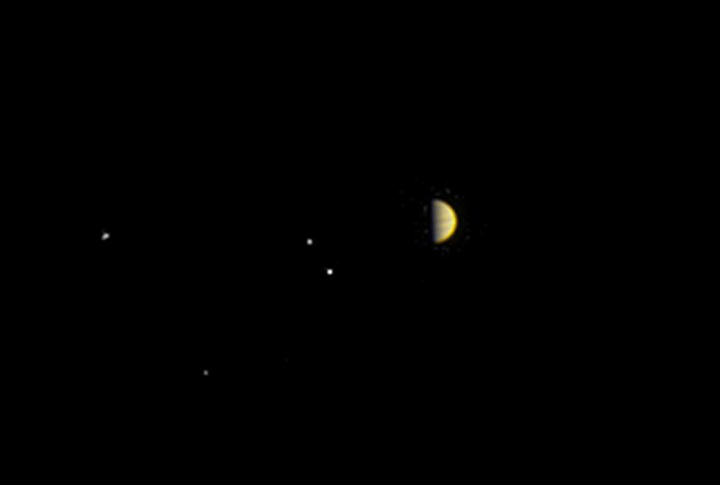NASA’s Juno spacecraft, on its way to orbit our solar system’s largest planet, Jupiter, is almost there.

READ MORE: Juno’s mission to Jupiter: 7 weird and wonderful facts about this giant planet
Juno sent back an image of Jupiter and its four largest moons — which you can see for yourself through a pair of binoculars — while it was just 10.9 million km from the giant gas planet. Even bands of its swirling clouds are beginning to become clearer.
The spacecraft will insert itself into orbit around Jupiter on July 4.
“This image is the start of something great,” said Scott Bolton, Juno’s principal investigator from the Southwest Research Institute in San Antonio. “In the future we will see Jupiter’s polar auroras from a new perspective. We will see details in rolling bands of orange and white clouds like never before, and even the Great Red Spot.”

Get daily National news
Once Juno is inserted into orbit, it will take 14 days to complete one orbit. Jupiter spins every 10 hours; after 33 planned orbits, the spacecraft will have covered the entire planet.
READ MORE: WATCH: Possible asteroid explodes in Jupiter’s cloud tops
Juno will map the enormous planet’s gravity and magnetic fields, providing scientists with a better understanding of the solar system’s most powerful magnetic field. It will also measure how much water exists in Jupiter’s atmosphere and investigate the planet’s aurorae, what we call northern (or southern) lights here on Earth.
You can find out where Juno is by downloading NASA’s Eyes application.









Comments